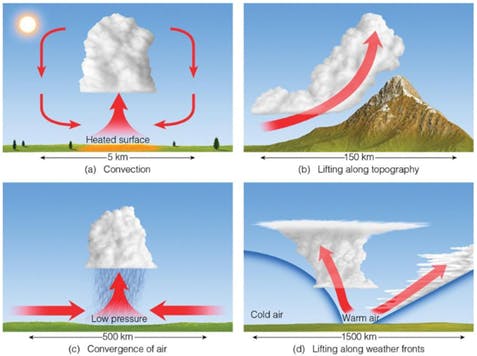
- Credit
- Cengage Learning
Atmospheric lift is a general term referring to a group of processes that cause air masses to rise upwards in the atmosphere. It is significant because it leads to the formation of precipitation. Rising air cools, losing its capacity to hold water vapour, and the vapour turns into water droplets or ice crystals. Clouds form and, when the weight of water droplets or ice crystals becomes too great, they fall as precipitation.
The four processes responsible for atmospheric lift are convection, convergence, interaction with topography, and the movement of weather fronts.